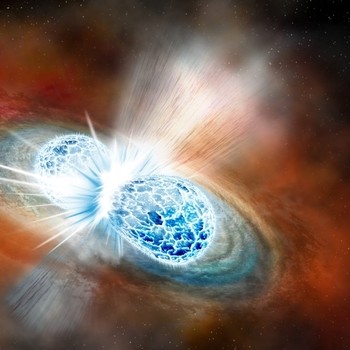Question #44302
1 Answer
The answer I'll give here is both.
Explanation:
Wave-particle duality applies to light, which says that light is a wave AND a set of particles, called photons.
The evidence behind the wave properties of light is an experiment called the double-slit experiment, first conducted by physicist Thomas Young in the 19th century, which showed that wave interference happened with light too. We are also familiar with light as a wave as when we pass light through a prism: it splits into different colours, showing different wavelengths of the EM spectrum.
The idea that light was particles was at first popularised by Newton, and proved by Einstein with his publication on the photoelectric effect, which just means that light particles, photons, can transfer its energy to electrons, which can, if there is sufficient energy, cause the electron to abandon their atom.
The current generally accepted view is that photons are excitations in the electromagnetic field, and within the field there are areas of different frequencies.

